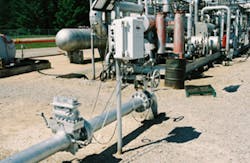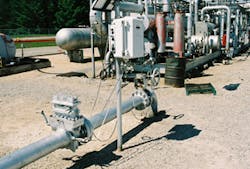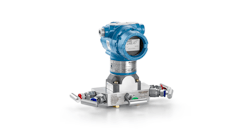4 Key Trends in Pressure Transmitter Technology
A soon-to-be-published research study by Flow Research shows the pressure transmitter market has grown substantially over the past several years. The findings of this study, which will be the subject of a feature article in the August 2014 issue of Flow Control magazine, reveal some interesting trends in the pressure transmitter space. The following highlights four particularly compelling insights gained from Flow Research’s most recent examination of the pressure transmitter market.
1. Multivariable Transmitters: Multivariable transmitters, which measure more than one process variable in a single instrument, are growing in popularity among end-users. Typically these transmitters measure pressure, differential pressure, and temperature. As such, a multivariable transmitter can actually replace three single variable transmitters. In many cases, they use these values to produce a mass flow measurement.
Multivariable transmitters can be used to reduce the need to buy a separate flow computer to perform the flow calculation. If individual pressure and temperature transmitters are used, the value outputs are sent to a flow computer that performs the flow calculation. For multivariable computers, the computing power of the flow computer is typically brought on board through the multivariable transmitter, which also performs the flow calculation. The trend toward multivariable transmitters can be expected to continue in the DP transmitter and flowmeter markets. These products typically sell for less than it would cost to buy the transmitters separately.
2. Multivariable Transmitters with Integrated Flow Element: Emerson Rosemount and other companies have introduced a multivariable transmitter that includes an integrated primary element, resulting in a full-fledged multivariable flowmeter. This has the advantage that the flowmeter can be calibrated with the primary element already mounted on it. It also makes it unnecessary for end-users to deal with two different suppliers when buying a DP transmitter and a primary flow element, such as an orifice plate or a flow nozzle.
3. Wireless Transmitters: Wireless pressure transmitters are becoming more popular, especially for new installations. Wireless transmitters can be installed in hard-to-reach locations, and they typically offer lower installations costs by eliminating the cost of wiring runs. While wireless still represents a small percentage of the total pressure transmitter market, expect this trend to grow. Battery-operated transmitters, which often accompany wireless installations, are also growing in popularity.
4. Energy Markets Drive Growth: Increased investments in the energy markets are driving pressure transmitter growth. More measurement points heave to be monitored, as it becomes more difficult to access natural resources in remote locations. Likewise, environmental regulations are making it necessary to increase the number of measurement points. This is true for both absolute and gauge pressure transmitters, as well as for DP flow transmitters.
There are multiple trends driving the pressure transmitter market, and these are some of the main ones. With improved economic conditions worldwide and many delayed projects coming back online, we can expect to see growth in pressure transmitter applications in the near term.
Look for more extensive coverage of the pressure transmitter market in the August 2014 issue of Flow Control magazine.
Jesse Yoder, Ph.D., is president of Flow Research Inc. in Wakefield, Mass., a company he founded in 1998. He has 25 years of experience as an analyst and writer in process control. Dr. Yoder specializes in flowmeters and other field devices, including pressure and temperature products. He can be reached at [email protected].
For more on Flow Research’s work in the area of pressure transmitters, visit www.pressureresearch.com.
Jesse Yoder
Jesse Yoder, Ph.D., is president of Flow Research Inc. He has 30 years of experience as an analyst and writer in instrumentation. Yoder holds two U.S. patents on a dual-tube meter design and is the author of "The Tao of Measurement," published by ISA. He may be reached at [email protected]. Find more information on the latest study from Flow Research, "The World Market for Gas Flow Measurement, 4th Edition," at www.gasflows.com.



